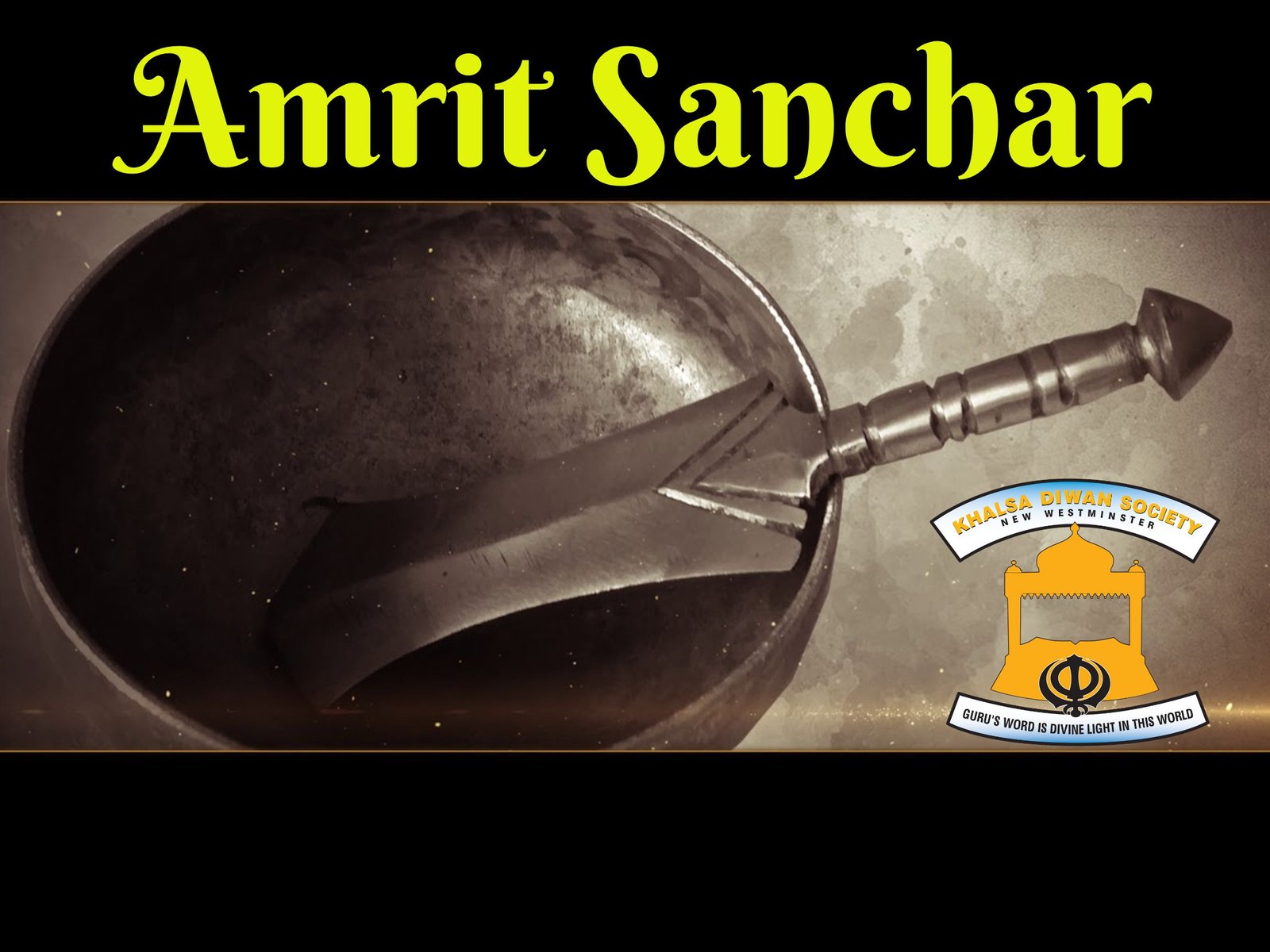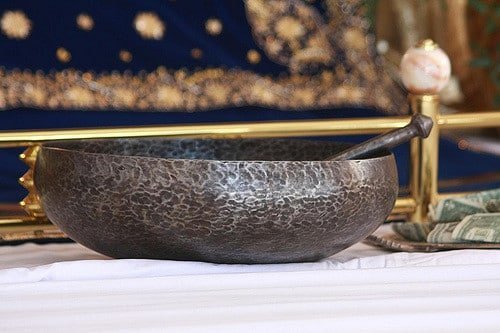
Take your Sikhi to the next level
Amrit Sanchar
The Amrit Sanchaar is one of the 4 Sikh Sanskaars.
The first Amrit Sancar took place in 1699, however the practice of initiation had been taking place since the time of Dhan Guru Nanak Dev Ji. During that time-period, this ceremony was known as Charan Amrit or Charan Phul or the Pag Pahul, the words Charan and Pag both signifying the foot of the teacher. During that time-period, the Gursikhs poured water over Guru’s toe to be initiated into the fold.
Khande di Pahul (Amrit ceremony) was initiated in the time of Dhan Guru Gobind Singh Ji Maharaj when Khalsa was inaugurated at Sri Anandpur Sahib on the day of Baisakhi in 1699. Guru Gobind Singh asked a gathering of Sikhs, that he wanted a head. At first, the people hesitated, terrified almost, and then one Gurmukh stepped forward, his name was Daya Raam. Daya Raam saw no problem with his beloved Guru asking for a head, and went with Guru Sahib into the tent. After some time, Guru Gobind Singh came out of the tent, with blood dripping from his sword. He asked the same question again. After the next four volunteers were in the tent, Dharam Das, Himmat Rai, Mohkam Chand, and Sahib Chand. Maharaj shortly after reappeared with the five, who were now all dressed like him. These five men came to be known as the Panj Pyare, these five were initiated into the Khalsa by receiving Amrit. These five were Bhai Daya Singh, Bhai Mohkam Singh, Bhai Sahib Singh, Bhai Dharam Singh and Bhai Himmat Singh. Sikh men were then given the name “Singh” meaning “lion” and the women received the last name “Kaur” meaning “princess”.
Amrit is only given if the Panj Pyaarai give you aageya(blessing). You can be denied. You can be told you are not ready.
Khande Di Pahul not only embodies the primary objects of Sikh faith and the promises connected therewith, but also is itself a promise to lead a pure and pious life to unite with Almighty Lord. It is about inward cleansing of the conscience and seeking unity with Akaal Purkh Vaheguru. The word Pahul is a derivative from the substantive, Pahu- which is an agent which brightens, accelerates or sharpens the potentialities of a given object.
After the initial Panj Pyaare Dhan Guru Gobind Singh Ji Maharaj made it clear that, where there are five Gursikhs, is where I am as well.
Amrit is only given if the Panj Pyaarai give you aageya (blessing). You can be denied. You can be told you are not ready.
The mentality you should have going into an Amrit Sanchar, is that you’re asking Guru Sahib, that maharaj do kirpa on me, my head is yours, my life is yours, whatever you do, whatever you see fit, I accept. You have to wear the Panj Kakaars, Kes, Kashera, Kaada, Kanga, and Kirpaan. Your Kashera must be cotton, your Kaada and Kirpan must be iron, and your Kanga must be wooden.
Amrit is made by reading the Panj Baniya (5 morning prayers) whilst mixing patasee (sugar cookies) with water, with a Khanda(double edged sword. Amrit is only made in sarbloh (iron) iron bowl, and an iron khanda
If Guru Sahib allows you to take Amrit. Amrit will be splashed 5 times, in your head, eyes, and then you are to drink the Amrit 5 times as well.
Once you are blessed with Amrit, the Panj Pyaare tell you your Rehit (daily discipline) and gift you Mool Manter and Gurmanter. And what you are allowed and not allowed to do. Keep the mentality that this life is longer yours, you have given your head to Guru Sahib.
Rules (Rehats) and Prohibitions (Kurehats)
Rehats
1.Five Kakaar : To keep five “Kakaars” ( Kesh, Kangha, Kachh, Kara and Kirpan) was made compulsory after taking “Amrit”.
2. Five Banis : To recite five Banis daily( Japji Sahib, Jaap Sahib, Sudha Sawaye, Chaupai Sahib and Anand Sahib) in the morning and in the evening So Dar Rehras and at night Kirtan Sohila.
3.Only Guru Sri Guru Granth Sahib Ji : After taking Amrit, Guru of a Sikh is only Sri Guru Granth Sahib ji.
4.No Discrimination of Caste : To treat all human being as equal. There should be no discrimination of caste or creed.
Prohibitions (Kurehats)
1.Cutting Hair : Cutting hair is strictly forbidden in Sikhism. from your head down to your toes, no hair is to be plucked, cut, burnt or pically/surgically removed.
2.Intoxication : Consumption of alcohol, drugs, tobacco and other intoxicants is not allowed. Intoxicants are strictly forbidden for a Sikh.
3.Adultery : In Sikhism, the husband and wife must be physically faithful to one another. The women other than wife should be treated as sisters and mothers. And for women all other men are just like fathers and brothers.
4.Meat :Sikhs are strictly prohibited from eating meat.
Would you like to learn more?
Come talk to us - Giani Jee is available in the Darbar Hall - best time is during the day or after the evening program and ask them any question about Amrit and the steps you can take to be ready to take Amrit.
No matter your age, or background, if you are ready, come see us and we can provide more details and let you know when the next Amrit Sanchar is taking place.



